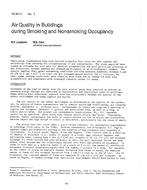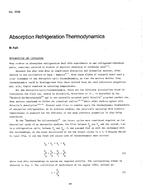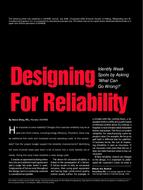Track: Modeling Throughout the Building Life Cycle
Sponsor: 7.5 Smart Building Systems
Chair: Andreas Athienitis, Ph.D., P.E., Fellow ASHRAE, Concordia University, Montreal, QC, Canada
This session focuses on case studies of novel model-based predictive control applications for a range of building types and HVAC systems, ranging from sets of rooftop air conditioners in small commercial buildings, a perimeter zone that includes a radiant floor cooling system, a small net-zero energy institutional building and a 17-story high university building with a hybrid ventilation system. Novel aspects of the case studies include a learning cloud-based supervisory controller and web-enabled thermostats, a distributed system identification approach for control-oriented models, and optimization of grid interaction for a novel net-zero energy building with building-integrated photovoltaics and a geothermal system.
1.Model Predictive Control of Multiple Rooftop Air Conditioners in Small Commercial Buildings
Jim Braun, Ph.D., P.E., Fellow ASHRAE, Purdue University, West Lafayette, IN
This presentation describes the development and application of a model-predictive controller for coordinating the operation of multiple rooftop unit (RTU) air conditioners that typically serve small commercial buildings. The cloud-based supervisory controller only requires web-enabled thermostats with no additional sensors. The controller learns the responses of the thermostats to RTU staging and uses the learned responses along with rated RTU power to determine RTU staging that minimizes total energy use and peak power over a relatively short control horizon. The presentation also presents results for energy and demand savings from a number of field demonstrations.
2. Model Predictive Control of a Radiant Floor Cooling System in an Office Space
Panagiota Karava, Ph.D., Associate Member, Purdue University, West Lafayette, IN
This presentation introduces agent-based approaches that address practical limitations associated with the scalability and engineering cost of MPC solutions for high performance buildings. A newly developed distributed system identification approach for control-oriented models that can be integrated in a plug-and-play manner is discussed and demonstrated using a case-study of an open plan office space with multiple building sub-systems. The second part of the presentation introduces centralized and distributed optimal control formulations along with a case study of an open-plan office space with several control units for local air and radiant comfort delivery with humans in the loop.
3. Model Predictive Control of a Net-Zero Energy Institutional Building and a Hybrid Ventilation System
Andreas Athienitis, Ph.D., P.E., Fellow ASHRAE, Concordia University, Montreal, QC, Canada
Application of predictive control strategies based on calibrated models for two Canadian case studies is overviewed: 1) A novel net-zero energy institutional library building that includes a building, integrated photovoltaic system, a geothermal heat pump system and floor radiant slabs; a key objective of the predictive control is to optimize interaction with the grid by precooling or preheating the building; 2) A hybrid ventilation system in a 17-story high university building with high thermal mass used in predictive night cooling mode to reduce the cooling load during the next day’s prediction horizon, while taking into account comfort constraints.
Presented: Sunday, January 21, 2018, 3:15-4:45 PM
Run Time: 90 min.
This is a zip file that consists of PowerPoint slides synchronized with the audio-recording of the speaker (recorded presentation), PDF files of the slides, and audio only (mp3) for each presentation.
Citation: ASHRAE Seminar Recordings, 2018 Winter Conference, Chicago, IL
Product Details
- Published:
- 2018
- Units of Measure:
- Dual
- File Size:
- 1 file , 96 MB
- Product Code(s):
- D-CH18Sem15


